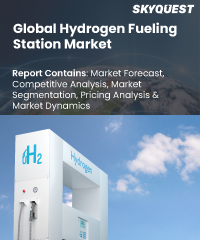
Report ID: SQMIG25AG2018

Report ID:
SQMIG25AG2018 |
Region:
Global |
Published Date: March, 2024
Pages:
223
|
Tables:
84 |
Figures:
76
Hydrogen Fueling Station Market Drivers
Growing Emphasis on Clean Energy
Government Support and Incentives
Hydrogen Fueling Station Market Restraints
High Initial Costs
Infrastructure Challenges
Our industry expert will work with you to provide you with customized data in a short amount of time.
REQUEST FREE CUSTOMIZATIONWant to customize this report? This report can be personalized according to your needs. Our analysts and industry experts will work directly with you to understand your requirements and provide you with customized data in a short amount of time. We offer $1000 worth of FREE customization at the time of purchase.

Report ID: SQMIG25AG2018